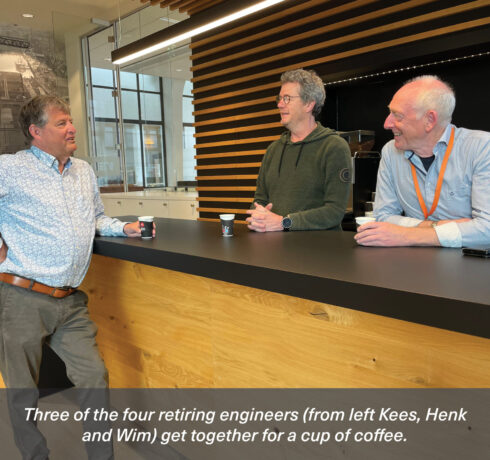The shipbuilding careers of Henk Provoost, Cees Louwerse, Wim Sinke and Piet Lievense of Damen Naval can undoubtedly be called impressive. They were all in the business for decades and have recently retired. Colleagues and friends have now bid a festive farewell to these stalwarts, all four of whom took their first steps in the shipbuilding business at De Schelde. They are now going to enjoy their well-deserved retirements, but first Henk, Cees, Wim and Piet look back at their long and rich careers, with Wim being the undisputed leader with a record of service of no less than forty-seven years.
Henk Provoost
When Henk (63) started work at De Schelde on 1 April 1981, with his HTS diploma in mechanical engineering in his pocket, things were not going well for the company. But he set to work in a cheerful mood and his first project as an engineer was to coordinate the fuel consumption tests for the S-class frigates. “Number four of this series of fourteen frigates was about to go on sea trials,” Henk recalls. “In those days, you were sent into the engine room with a checklist to collect all kinds of data on temperature, pressure, engine speed and so on.”
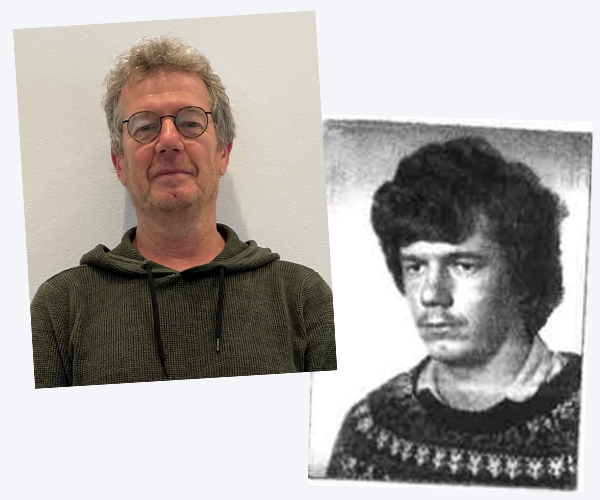 Henk now and then.
Henk now and then.
“Nowadays, you can conjure up this data at the push of a button, so to speak. But this manual work was, of course, very instructive for me as a 23-year-old. After his second major assignment, the complete engineering process for the torpedo working ship HNLMS Mercuur, Henk moved to the Quality Control Department in 1988. “I worked there for ten years, initially as a team leader, during which time I was promoted to departmental head. In 1998, I returned to engineering.”
For Henk, it was then that a period began in which he was allowed to work on what they call ‘big grey’ in the Royal Netherlands Navy: the large ships of the fleet, such as the Karel Doorman. “I was involved in that project from the signing of the contract in 2009 until the final after-care issues in 2015. A wonderful and, for a techie like me, very instructive trajectory.” The crowning glory of his work was the Combat Support Ship Den Helder. Henk was involved with this until his last working day. Looking back on a career spanning over four decades, Henk can only say that he has always enjoyed himself. “The ship as a product has always fascinated me, ever since I was a child. A ship is such a complex entity. And when it sails… the sheer power of a frigate ploughing through the water at 22 knots is simply impressive!”
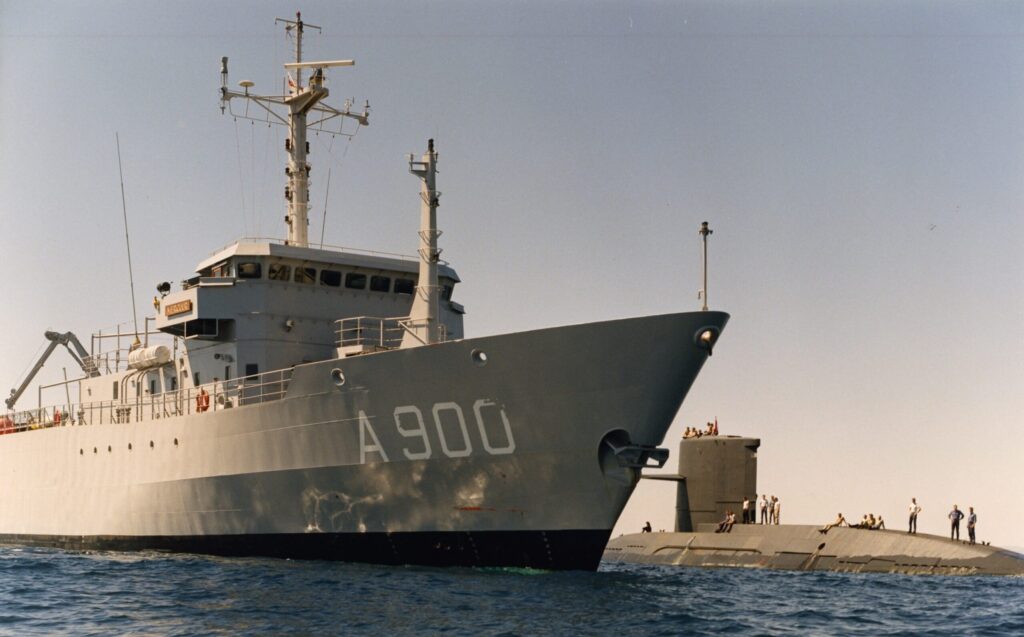 Henk, Cees and Piet all worked on torpedo suppport vessel HNMLS Mercuur.
Henk, Cees and Piet all worked on torpedo suppport vessel HNMLS Mercuur.
Cees Louwerse
Starting out as a laboratory technician, he switched to engineering a few years later and eventually rounded off his career as an assistant manager. Cees Louwerse (65) looks back on a long career, which began in 1979 at De Schelde. “After completing the MTS and my national service, during which I also studied business administration at higher vocational education level, I started work as a laboratory assistant in the metallurgy laboratory,” says Cees. “After about four years I was seconded to ‘Apparatenbouw’ to carry out material research there, but of nuclear components.”
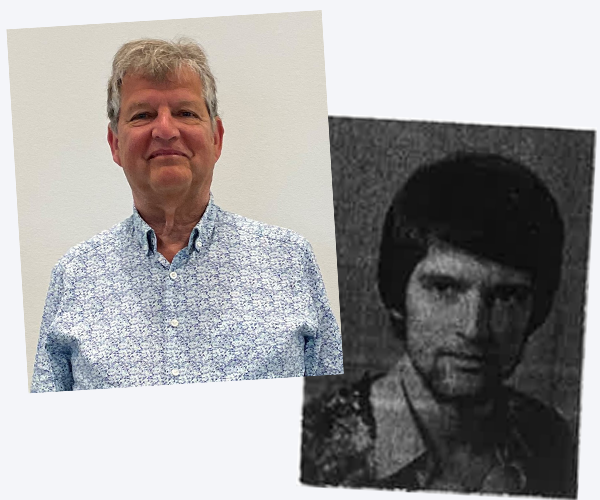 Cees in 2022 and back in 1979.
Cees in 2022 and back in 1979.
Cees made the switch to Engineering in early 1984. “De Schelde had just emerged from the RSV debacle and the Ministry of Defence, our most important client, wanted the engineering branch of the company to expand considerably. So suddenly there were a lot of vacancies in Engineering. I started work there as a draughtsman/constructor. My first major project was the M-class frigates, and in the meantime, I helped build the torpedo working ship HNLMS Mercuur.” The construction of the PSD ferry Koningin Beatrix (1990) was a milestone for Cees because he was then promoted to team leader in mechanical engineering.
In 1993, under his leadership, all technical spaces on board LPD-1 HNLMS Rotterdam were assigned. “Unforgettable weeks” followed in the late 1990s when he went to Shanghai. There, Cees supervised the transfer of technology for the construction of eight cargo/container ships for shipping company Genchart. In 2010 he was asked to become assistant manager of the Marine & Propulsion department. “I initially did that part-time because I was also working as team leader on the engine rooms of the Karel Doorman.” From 2017, he was also team leader on the POLA-MX project. “I seized the opportunities I was given and was able to develop my talents and I am happy about that,” he concludes. “But it was also very nice to be able to manage and supervise people.”
"Life is too short to learn everything you need to know. And by the time you think you’ve got the gist, you’ve retired.” Piet Lievense
Wim Sinke
For 47 years he worked at De Schelde and later Damen Naval. Wim Sinke (67) can easily be called the ‘elder statesman’ of the four departing colleagues we are hearing from here. He started working at De Schelde in 1975. Starting as a draughtsman/constructor, Wim ended his long career in a completely different specialty: security. In the meantime, he was also head of the Staff Office for many years. Wim looks back on a multi-faceted career, which he says gave him a lot of satisfaction.
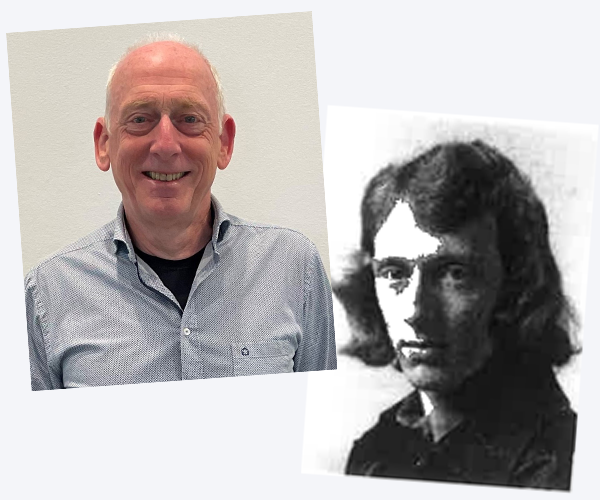 Wim these days and 47 years ago.
Wim these days and 47 years ago.
“I started in February 1975. They were looking for a draughtsman for the Scheldebouw,” Wim recalls. “With my MTS diploma in my pocket, I applied and took a test. In the end, someone else got the job. But shortly after they asked me to come to the office and they offered me another job: draughtsman/constructor piping in the drawing office. I could start right away.” His first project was the Standard frigates. “I made the very first drawings for the piping in these frigates; I was the first of the so-called ‘S frigate generation’.”
In the early 1980s he went to work as Group Leader to direct the piping work for the two air defence frigates, or L-frigates for short. “De Schelde built a total of twelve Standard frigates, but two of them were sold to Greece,” Wim explains. “To replace those two, we built two L-class frigates for the Royal Netherlands Navy, adapting the drawing package of the Standard frigates.”
Around 1984, the M-frigates project got underway. Wim: “I was promoted to ‘sous-chef’, which meant I was responsible for the entire engineering process (except for the engine room) for the piping on board these eight ships.” A new promotion followed in the early 1990s. Wim became head of the Staff Office, the later support team. At the end of the nineties, security came into the picture. “When we started building the air defence and command frigates (LCFs), I started doing the security of the engineering process for these ships and eventually became the official security representative of De Schelde to DMO.” Wim continued to do security work until his retirement. Until three years ago, he combined the position of head of security at Damen Naval with his duties as head of the support office. He is now going to enjoy his free time. “With seven grandchildren, I won’t be getting bored,” he concludes with a smile.
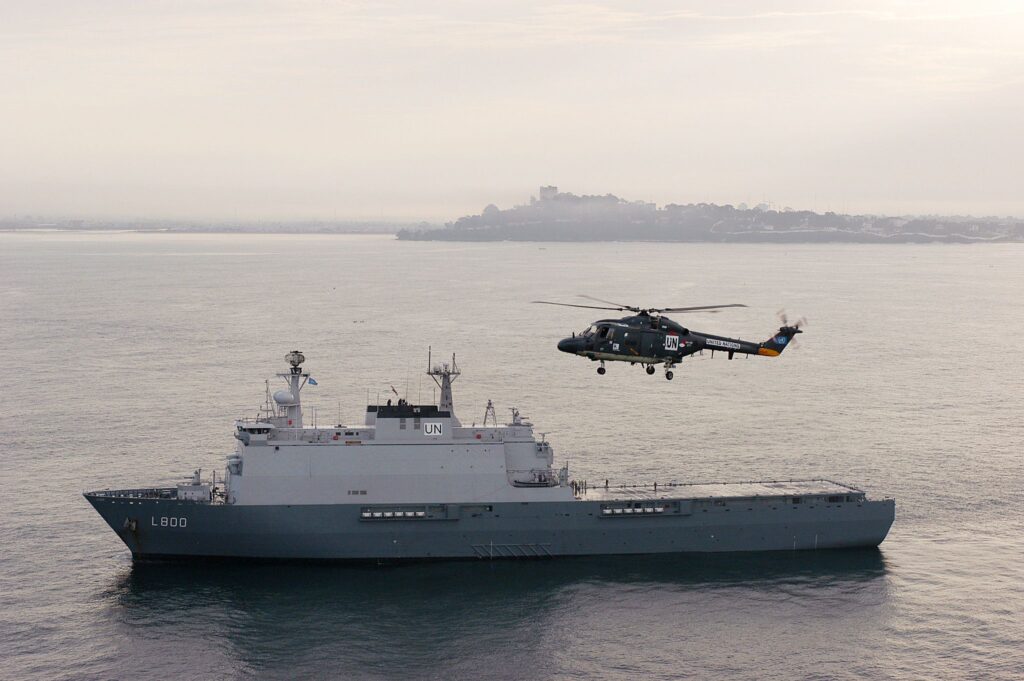 Piet thinks back fondly to the construction of the LPD-1 HNLMS Rotterdam (1998).
Piet thinks back fondly to the construction of the LPD-1 HNLMS Rotterdam (1998).
Piet Lievense
Piet Lievense, now 64, is originally from Westkapelle. He graduated from the HTS in electrical engineering, and was working at Signaal, a manufacturer of radar systems in Enschede (now Thales), when an advertisement in a newspaper caught his eye in 1984. De Schelde was looking for a specialist in engine room automation. Piet was hired and could start working in the drawing office (STK/WA department), which was then headed by the quirky and technically competent Frans van den Berg.
Piet went to work on the M-class frigates, a project that was then in the specification phase. “I had to write specifications for all kinds of things in the engine room that ran on automated systems,” he says. “That was right up my street, because electricity and mechanical engineering coincided in this job, and I was interested in both.” The construction of the eight Multi-Purpose frigates lasted until the mid-1990s. In the meantime, Piet also participated in building HNLMS Mercuur and a number of Ro-Ro ships.
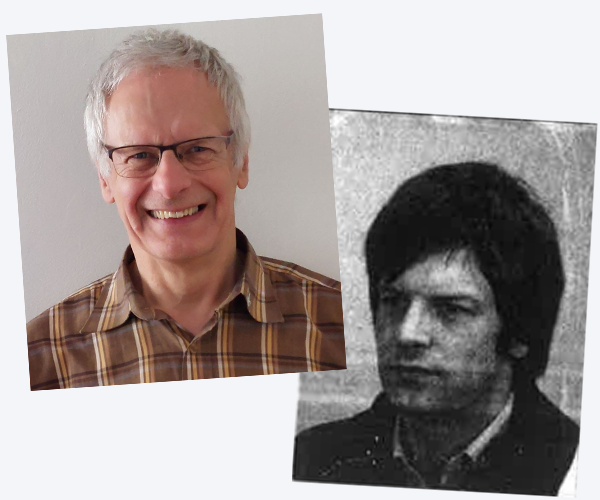 Piet in April 2022 and on his first day of work.
Piet in April 2022 and on his first day of work.
He thinks back with pleasure to the construction of the gigantic LPD-1 HNLMS Rotterdam (1998). “A wonderful project,” he recalls. “That ship had electric propulsion, which was special for that time for a ship of that power.” Piet was also involved in the construction of the four air defence and command frigates (LCFs). He remembers the attack on the Twin Towers in New York during the sea trials of the first of the four LCFs, HNLMS De Zeven Provinciën in 2001, like yesterday. “That made a big impression. I remember that immediately after the attack we were suddenly forbidden to use our mobile phones on board; it was feared this might provoke a missile attack on our ship.”
During the construction of HNLMS Rotterdam, Piet became more and more interested in electric propulsion, electric power technology and high voltage technology. “From 2009 at the start of the JSS project, I moved completely in that direction and had the opportunity to participate fully in the Karel Doorman in that discipline.” Around 2017, he switched from Engineering to the Research & Technology Support (R&TS) department. Piet concluded his career with the Combat Support Ship Den Helder, the tanker for the Royal Netherlands Navy. “Life is too short to learn everything you need to know. And by the time you think you’ve got the gist, you’ve retired.”

